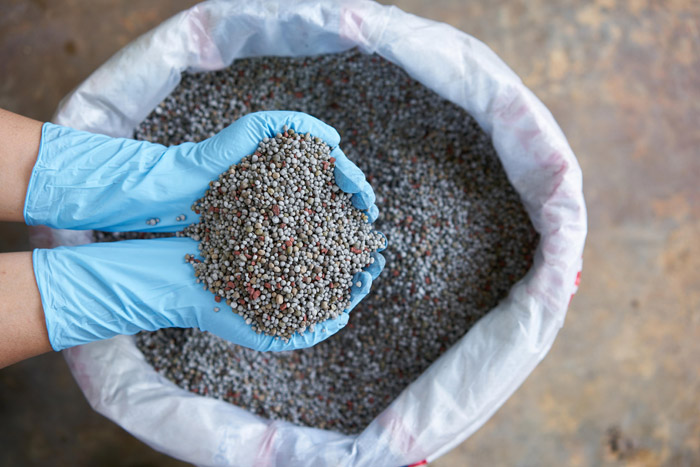Phosphate (P) is essential to plant growth. Phosphate in the soil is taken up by the growing plant and returned to the soil when the plant dies, or, if the plant is eaten by an animal, the phosphate is returned to the soil when the animal defecates, and when the animal dies. This is the natural cycle.
Nature moves in a cycle – always – and we disrupt that cycle at our peril. We can get away with doing things our way on the short run, but in the end nature will prevail! In the end nature always gets the upper hand. Always!
Industrial agriculture does not follow this cycle. Every good industrialized farmer will test their fields prior to planting. The soil lab will test the soil sample they send in, primarily for N, P, K, and S, and will give the farmer recommendations as to how much of each of these elements they need to add to their soil in order to maximize their yield. Being a good farmer, they will follow these recommendations. The necessary phosphate will come from a mine. Today, most of the phosphate used in North America comes from mines in Florida. There are other phosphate deposits scattered here and there.
Of course the most accessible phosphate deposits are already gone, and this is reflected in the price of phosphate fertilizer. The price is going up. The story of the Pacific Island nation of Nauru makes for an interesting read in that regard. Estimates vary, but we probably have another 50 to 200 years of phosphate remaining. But that gives us no indication of how accessible that phosphate is. As long as we pay only for the cost of extracting any non-renewable resource, we will move our extraction, our mining, from the most accessible to the less and less accessible – the more and more expensive. Under pure free market economics, this extraction of these resources places no value on the needs of future generations.
What makes the phosphate situation more challenging, is that as we inevitably shift our dependency to less accessible P, we will need to expend more energy extracting it – this at the very time we are trying to cut down on energy use.
The irony is that there is a parallel problem to phosphate depletion – phosphate pollution. Because humans are at the top of the food chain, every city has this problem – how to dispose of fecal waste.
All cities have a sewage disposal challenge, which includes how to dispose of the human fecal matter. In Manitoba this challenge is coming to a head, as we find that Lake Winnipeg is becoming polluted with phosphates – phosphate mined in Florida, passing through the food chain, and ending up in human waste. This waste has traditionally been dumped into Lake Winnipeg. We need to find ways of getting this phosphate back onto the land where the crops are growing – displacing chemical phosphate mined in Florida.
As a society, we will need to solve this problem. Nature insists on this. How long will it take us to work out the solution sociologically or technically? How much time will we have?




